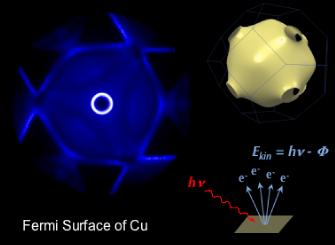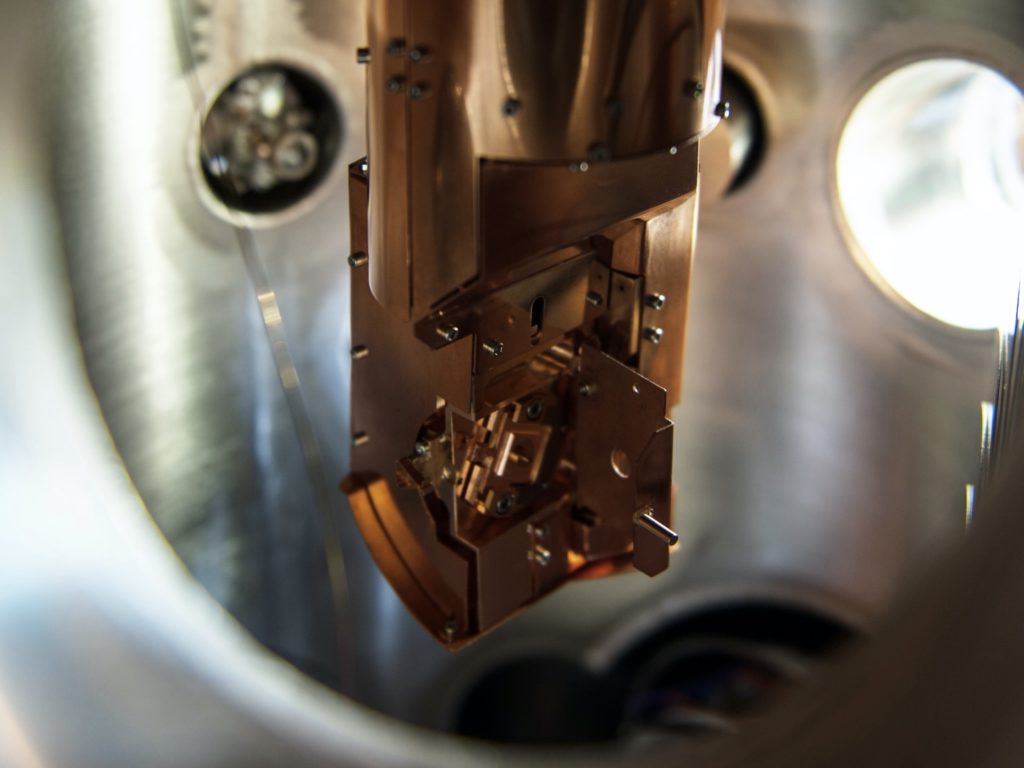- Home
- Laser-ARPES
Laser-ARPES
An ARPES experiment measures the energy-momentum distribution of photoemitted electrons. This provides a direct image of the quasiparticle band structure of a material and gives detailed information on the propagation of electrons in the full interacting many-body system, making ARPES uniquely powerful for probing the low-energy excitations that define the electronic properties of materials.


We contribute actively to the development of laser-based ARPES. Specialized UV laser systems – as we operate them in our lab – provide a high photon flux in a narrow bandwidth surpassing even the very best synchrotron monochromators. This enables efficient ARPES measurements near the resolution limit of modern electron spectrometers of ~ 1 meV. To match this resolution level, we designed in collaboration with Diamond Light Source a simple and robust cryogenic 6-axes sample goniometer reaching a temperature below 3 K without any radiation shield between the sample surface and the UHV chamber.
We also contribute at the forefront to combining the intrinsic momentum space resolution of ARPES with real space resolution. This opens a new dimension for ARPES experiments and allows qualitatively new studies of micro-crystals and of inhomogeneous electronic states. Our approach to this problem is to focus the UV excitation with refractive lenses mounted in UHV to allow for a high numerical aperture. In combination with a precise sample scanning stage and fast data acquisition software, we can measure 4D data sets where every pixel on the sample surface contains a full 2D energy / momentum dispersion cut.
